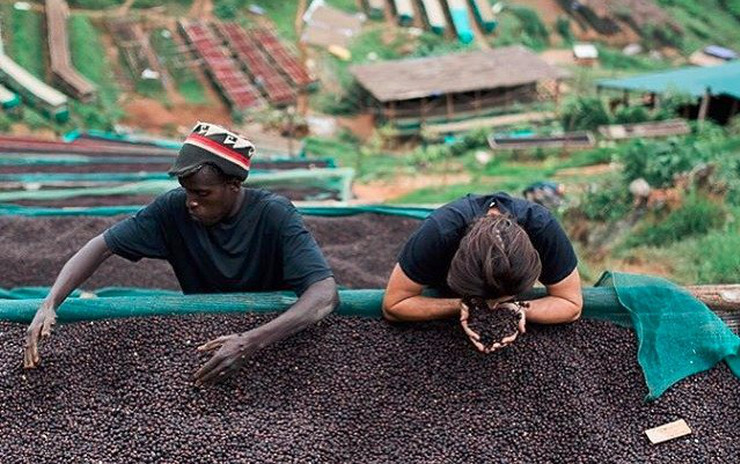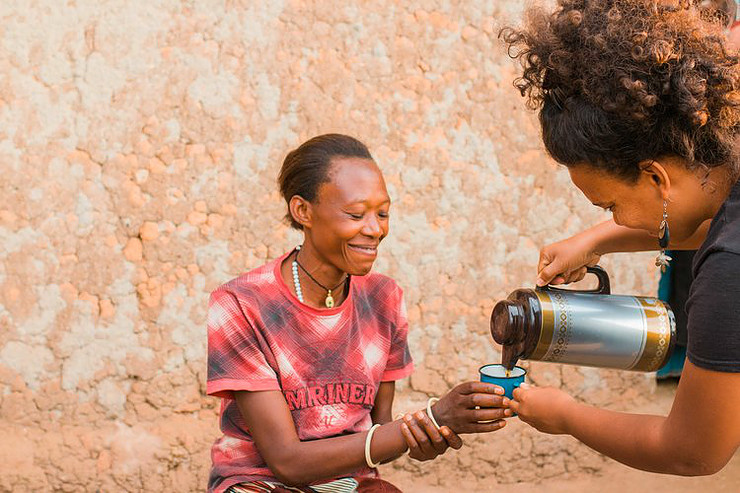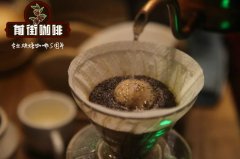Recommended by emerging boutique coffee producing areas-Heart of Africa what is the story of the long-distance coffee project in Burundi?
Professional coffee knowledge exchange more coffee bean information please follow the coffee workshop (Wechat official account cafe_style)
The third wave of fine coffee emphasizes from seeds to cups; the overall upgrading of the concept of coffee has not only improved brewing techniques and baking methods, but also made many improvements in varieties, planting techniques, and post-processing methods in coffee producing areas. as a result, many new producing areas have sprung up, and the flavor has not lost to the traditional fine producing areas. Burundi is a clear example.

Burundi only began to grow coffee in the 1930s. Coffee has elegant floral aroma and sweetness, and its flavor can be accepted by most people. It is currently the 31st largest coffee producer in the world, accounting for less than 0.5% of the world's output, and its popularity is still low. So it is actively expanding its popularity.
Burundian coffee beans are imported from Belgians, 96 per cent of the varieties are Arabica, the most important is the bourbon, which is the same as neighboring Rwanda, and there are also a number of Jackson and Mibirigy varieties, with Robusta accounting for only 4 per cent.
Burundi is a very beautiful landlocked country, known as the "Heart of Africa" (The heart of Africa), which is called because of its location, on top of the steep East African Rift Valley and its complex terrain, the magnificent ridge suddenly rising from the east bank of Lake Tanganyike is a watershed between Africa's two great rivers, the Nile River system and the Congo River system, like a heart.
Burundian coffee grows in mountains ranging from 1750 to 2000 meters above sea level. since the Belgians brought the first coffee tree in the 1930s, today, more than 600000 of Burundian families depend on coffee for a living.
Most of the coffee plantations in Burundi are small-scale farmers, with an average of about 200-300 coffee trees per household. Due to political and economic instability and economic hardship in the country, they are less able to buy chemical fertilizers and pesticides, so they are mostly grown by natural farming or organic methods.
The farming method in Burundi is planted at intervals from other cash crops, without mechanized equipment, and almost all of them are harvested manually.
The main way of handling coffee beans in Burundi is the washing method. There are more than 160washing plants scattered in the hilly areas of Burundi, after which the management company above the water treatment plants (locally known as sogestal) is responsible for transportation and other commercial sales. Burundian coffee beans are mostly exported to Belgium, Germany, the Netherlands, Japan, Australia and the United States.
Coffee exports have become an important source of economy for Burundi, mainly with famous coffee producing areas such as Kayanza, Ngozi, Mumirwa, Buyenzi and Kirimiro.
A long-range coffee plan that attaches importance to quality and the income of small farmers
For example, Ethiopia has a red cherry project, Bolivia has a tomorrow sun plan, and Burundi has a famous long-range coffee program. The program, launched by the Carsons in the United States (Kristy Carlson and Ben Carlson), was originally designed to promote direct trading relationships between bean bakers and small farmers, thereby improving the quality of coffee and the livelihood of small farmers.

After buying coffee locally in Burundi for a period of time, the Carsons decided to set up their own washing and treatment plant, because it seemed to them to be the only way to directly control the quality and treatment of the whole coffee. And it is also the most direct purchase price to small farmers, so that they can get a good reward for their hard work.
The Carsons' washing plant is called Heza, and about 2500 small farmers nearby bring their coffee berries for processing. The processing plant itself has more than 150 employees who work together to produce the best quality coffee. A small group of employees are responsible for the selection of coffee cherries, quality control and coffee production. The other group, mainly female, is responsible for a large number of post-production quality control and the management of shelled coffee beans.
Although the Heiza treatment plant is a water washing plant, it is also an excellent place for sun and honey treatment, not only because the coffee berries sent here are always ripe red, but also because of the excellent conditions of the treatment plant itself. the bowl-shaped geographical location has a good air circulation, which can provide just the right air flow for sun treatment.
The long-range coffee program is not only a coffee plan that can take care of small farmers, but also a coffee bean program with quality assurance.
More than ten years ago, it was not easy to see coffee beans from this producing area in the list of fine beans in Burundi because of its quality. But in recent years, this coffee producing area, known as the Heart of Africa, is full of new vitality, not only in the boutique coffee bean lists of various countries, but also in the East African boutique competition, competing with traditional super boutique producing areas such as Kenya and Ethiopia on the competition field.
END
Important Notice :
前街咖啡 FrontStreet Coffee has moved to new addredd:
FrontStreet Coffee Address: 315,Donghua East Road,GuangZhou
Tel:020 38364473
- Prev

Description of flavor characteristics of coffee treated with El Salvador black honey
Country: El Salvador production area: Chara á n Fruit Grade: SHG treatment: black honey treatment altitude: 1400-1500m varieties: Pacas Pacas 2015 COE 12th 2014 COE 4th 2013 COE 4th active volcanic activity brings mineral-rich volcanic ash to the country, the soil mainly composed of volcanic ash has more minerals and less organic matter.
- Next

The Flavor characteristics of the hard-won Rosa Coffee introduce why Rosa Coffee is so popular
Professional coffee knowledge exchange more coffee bean information please follow the coffee workshop (Wechat official account cafe_style) Rosa Geisha Coffee, also known as Geisha, (Rosa Geisha) is a member of the Tibika family, left Mount Rosa (Geisha Mountain) in southwestern Ethiopia, traveled through Kenya, Tanzania and Costa Rica, and half a century later in
Related
- Detailed explanation of Jadeite planting Land in Panamanian Jadeite Manor introduction to the grading system of Jadeite competitive bidding, Red bid, Green bid and Rose Summer
- Story of Coffee planting in Brenka region of Costa Rica Stonehenge Manor anaerobic heavy honey treatment of flavor mouth
- What's on the barrel of Blue Mountain Coffee beans?
- Can American coffee also pull flowers? How to use hot American style to pull out a good-looking pattern?
- Can you make a cold extract with coffee beans? What is the right proportion for cold-extracted coffee formula?
- Indonesian PWN Gold Mandrine Coffee Origin Features Flavor How to Chong? Mandolin coffee is American.
- A brief introduction to the flavor characteristics of Brazilian yellow bourbon coffee beans
- What is the effect of different water quality on the flavor of cold-extracted coffee? What kind of water is best for brewing coffee?
- Why do you think of Rose Summer whenever you mention Panamanian coffee?
- Introduction to the characteristics of authentic blue mountain coffee bean producing areas? What is the CIB Coffee Authority in Jamaica?

